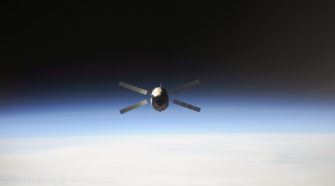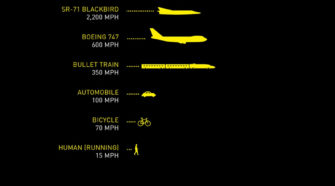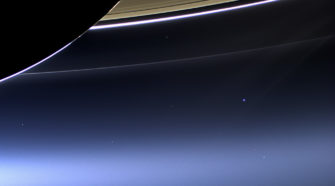Fiery end for ESA’s ATV Albert Einstein
ESA’s fourth Automated Transfer Vehicle cargo ferry, Albert Einstein, completed its five-month mission to the International Space Station by reentering the atmosphere today and burning up safely over an uninhabited area of the southern Pacific Ocean. Automated Transfer Vehicles (ATVs) are the most complex space vehicles ever developed in Europe and are the largest and …
How fast can Juno go?
When arriving at Jupiter, the planet’s gravity pulls in Juno faster and faster until the spacecraft reaches a speed of over 250,000 kilometers per hour (150,000 miles per hour) with respect to Earth – making it one of the fastest human-made objects ever. When it arrives at Jupiter, it slams on the brakes, firing its main engine in …
Cassini images Earth beneath Saturn’s rings
NASA’s Cassini spacecraft captured color images of Earth and the moon from its perch in the Saturn system nearly 900 million miles (1.5 billion kilometers) away on July 19. Meanwhile, MESSENGER, the first probe to orbit Mercury, took a black-and-white image from a distance of 61 million miles (98 million kilometers) as part of a …
Radio bursts discovered from beyond our galaxy
Astronomers, including a team member from NASA’s Jet Propulsion Laboratory in Pasadena, Calif., have detected the first population of radio bursts known to originate from galaxies beyond our own Milky Way. The sources of the light bursts are unknown, but cataclysmic events, such as merging or exploding stars, are likely the triggers. A radio burst …
What would we want to know if we landed on Jupiter’s Europa?
Most of what scientists know of Jupiter’s moon Europa they have gleaned from a dozen or so close flybys from NASA’s Voyager 2 spacecraft in 1979 and NASA’s Galileo spacecraft in the mid-to-late 1990s. Even in these fleeting, paparazzi-like encounters, scientists have seen a fractured, ice-covered world with tantalizing signs of a liquid water ocean …
Cold brown dwarfs blur line between stars and planets
In 2011, astronomers on the hunt for the coldest star-like celestial bodies discovered a new class of such objects using NASA’s Wide-Field Infrared Survey Explorer (WISE) space telescope. But until now, no one knew exactly how cool the bodies’ surfaces really are. In fact, some evidence suggested they could be at room temperature. A new …






